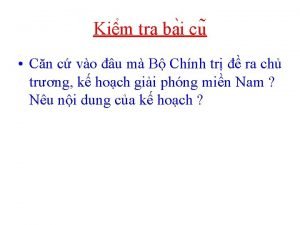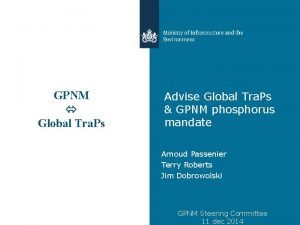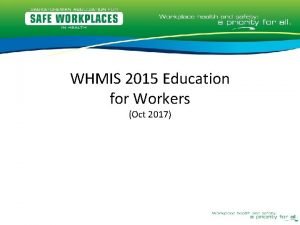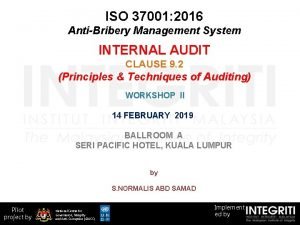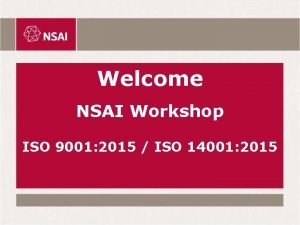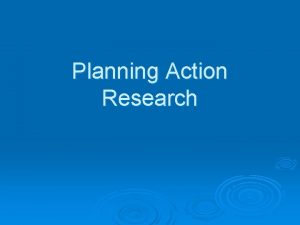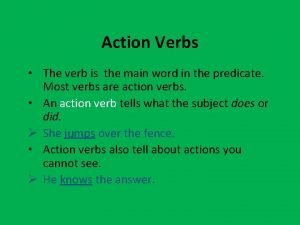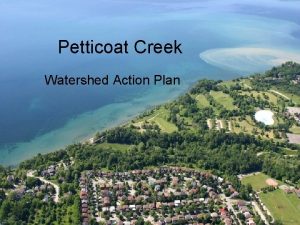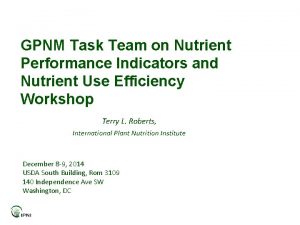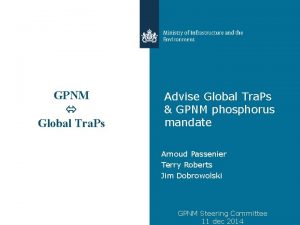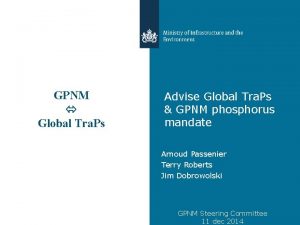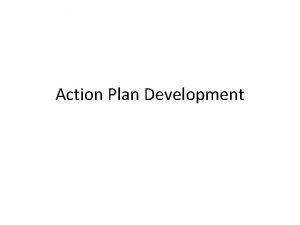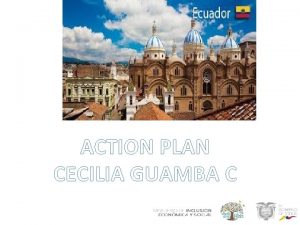GPNM proposed Action Plan 2015 16 Main Elements












- Slides: 12

GPNM proposed Action Plan 2015 -16

Main Elements • Advocacy & consensus-building • Stimulate discussion & assessment of scientific evidence • Inform intergovernmental agreements

Main Activities • Build consensus to promote nutrient use efficiency and facilitate on-the-ground actions • Support implementation of the current GEF funded Global Nutrient Cycle project • Facilitate PPG phase of INMS

Outcome: Improved knowledge and changed attitudes towards nutrient management by governments, business and CSO sectors, through a strong and vibrant GPNM, in order to address the root causes of eutrophication world-wide and to deal with nutrient losses. Core Components: (1) Knowledge Generation, (2) Extension and Technical Services, (3) Outreach and Advocacy, and (4) Partnership and Network Development

Immediate Actions: Building knowledge through sharing of lessons learned to assist governments and other stakeholders in the analyses of policies, development of business models and choice of technological options for sustainable production and use of nutrients � Creation/development of a global knowledge-base on policy experiences and ways to adapt such experiences to specific national circumstances and make it available to all stakeholders � Promotion of activities that raise awareness and dissemination of information for enhancing capabilities of partners � Facilitation and/or development of new approaches and projects to complement governments’ efforts to reform/develop policy frameworks for sustainable nutrient management �

Immediate Actions: Offer opportunities to develop networks among the members in order to establish and strengthen a community of practice � Develop indicators to assess progress towards globally agreed targets (e. g. , Aichi target 8, GPA/IGR-3 Manila Declaration, Rio+20 outcomes etc. ) � Setting of region/nation specific targets on NUE & nutrient load into coastal waters (e. g. Aichi target 8) � Secure commitments from stakeholders on regular reporting on the progress towards NUE and publish periodic reports on progress �

Immediate Actions: � Holding of periodic meetings of partners to share experiences and define agenda for action � Identification, review and compilation of best nutrient management practices and dissemination through web and meetings/workshops � Development of a “policy toolbox” related to managing nutrient impacts from key source/sectors, to support national actions, especially development of nutrient reduction strategies, and designing of training module and associated curriculum

Immediate Actions: � Production of policy briefs, information documents and case studies to promote sustainable nutrient management. � Facilitation of dialogues for policy reform in support of technological and management innovation to promote NUE � Facilitation and design of cost-effective on-the-ground interventions reflecting interests of the partners � Development of e. Xtension training programme and facilitation of exchange of scientific data, methodologies and research applications among various stakeholders to support research and extending the BMPs to the small holder farmers

UNEP/GEF Global Nutrient Cycle project • Finalization of the quantitative modeling • Synthesizing available scientific, technological and policy options and their bringing together in Policy Tool Box; • Testing and application of the model and tool box in the Manila Bay watershed; • Replication of the ‘Ecosystem Health Report Card’ approach in the Laguna de Bay

UNEP/GEF Global Nutrient Cycle project • Training in source impact modeling and use of the policy tool box; • Production of briefing notes summarizing the model's results, analyses and training outcomes; • Continuation of support to GPNM for the effective development, replication, up-scaling and sharing of these key outcomes; and • Facilitation of the Final Evaluation of the project.

Other projects • INMS; • Controlling Nutrient Loading and Eutrophication of Coastal Waters of the South Asian Seas Region; • Nutrient loading into the Caribbean Sea • GPA’s Wastewater Management project

Indicative Budget GEF 2015 955 K 2016 115 K (GNC & INMS) Other: • Secured 150 K (SACEP) 1, 292 K 702 K 2, 397 K 867 K • Unsecured Total
